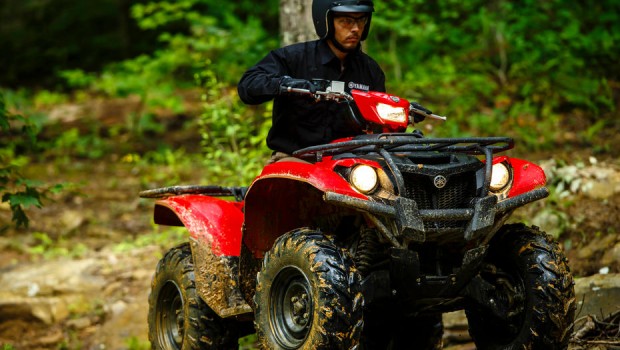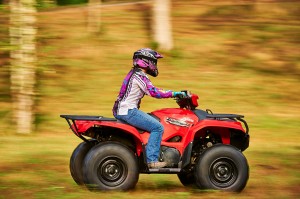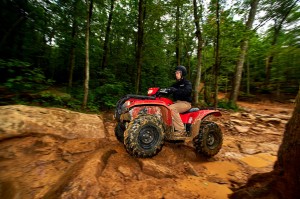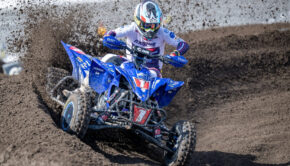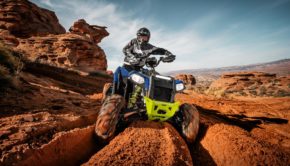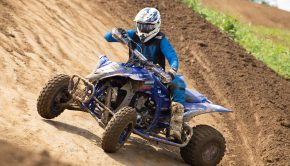2016 Yamaha Kodiak 700 EPS First Test: WITH VIDEO
Can it possibly replace almost an entire line of 4×4 ATVs?
In 2014, Yamaha offered four different 4×4 ATV models with variations of each: the Grizzly 350, 450, 550, and 700. In 2015, their lineup was reduced to several variations of the Grizzly 700, while Yamaha sold their remaining stock of sub-700cc models. This year, Yamaha has set out to replace the 350, 450, and 550 with three variations of one new model, the 2016 Kodiak 700.
Yamaha claims that today’s 4×4 ATV enthusiasts are making purchases based on budget rather than engine displacement. With the redesigned, full-sized, 2016 Grizzly 700 appointed to serve the needs of sport-focused 4×4 riders first, Yamaha focused on making the Kodiak serve the needs of die-hard utility users, while still working for recreational riders and those looking for a mid-sized 4×4 ATV in both feel and price.
Pricing and Options
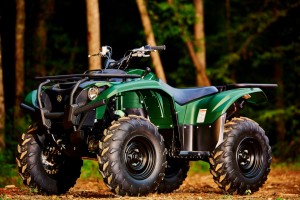
At an impressively low retail price of $6,999, the Kodiak is only $500 more than Suzuki’s similarly equipped King Quad 400 and $2,300 less than Honda’s similarly equipped Rincon 680.
Yamaha is using the same engine powering the Wolverine R-Spec UTV to power the Kodiak and Grizzly ATVs. Producing fewer engines allows Yamaha to save on manufacturing costs. Combined with careful feature selection, Yamaha has managed to produce three variations of the new Kodiak 700, meeting some pretty impressive price points. The base model sacrifices front differential lock and preload-adjustable shocks. It features a basic, old school indicator light cluster and comes with a standard ball mount arriving at an impressively low retail price of $6,999. That’s only $500 more than Suzuki’s similarly equipped King Quad 400 and $2,300 less than Honda’s similarly equipped Rincon 680.
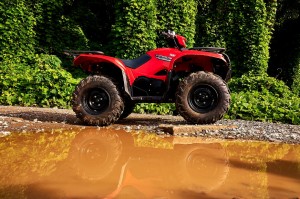
At $8,199, the Kodiak 700 EPS comes with electric power steering, 5-way preload adjustable shocks, combination handlebar-mounted headlight and digital instrument display, and a 2” hitch receiver.
At $8,199, the Kodiak 700 EPS comes with electric power steering, 5-way preload adjustable shocks, combination handlebar-mounted headlight and digital instrument display, and a 2” hitch receiver. The Kodiak EPS is $400 less expensive than Polaris’ slightly dressier, yet smaller displacement, Sportsman 570 SP. It’s $100 less than the Suzuki King Quad 500 with power steering, although the King Quad features front differential lock. Compared to the Honda Rincon 680, not available with EPS, the Kodiak EPS is $1100 less expensive.
Finally, for $8,899, the Kodiak 700 EPS SE offers all of the EPS additional features, plus Yamaha’s On-Command push button electronic four-wheel-drive with front differential lock, cast aluminum wheels, and Carbon Metallic painted bodywork. The Kodiak SE retails for $300 less than the King Quad 750 with power steering and $300 more than the equally outfitted Sportsman 570 SP. Remarkably, it’s only $300 more than the 2014 Grizzly 550 EPS, without the Kodiak’s bigger engine, numerous updates, and premium Special Edition features. Oh yeah, it’s still $400 less than the more sparsely featured Honda Rincon.
Clearly, Yamaha has price points covered from 400cc up.
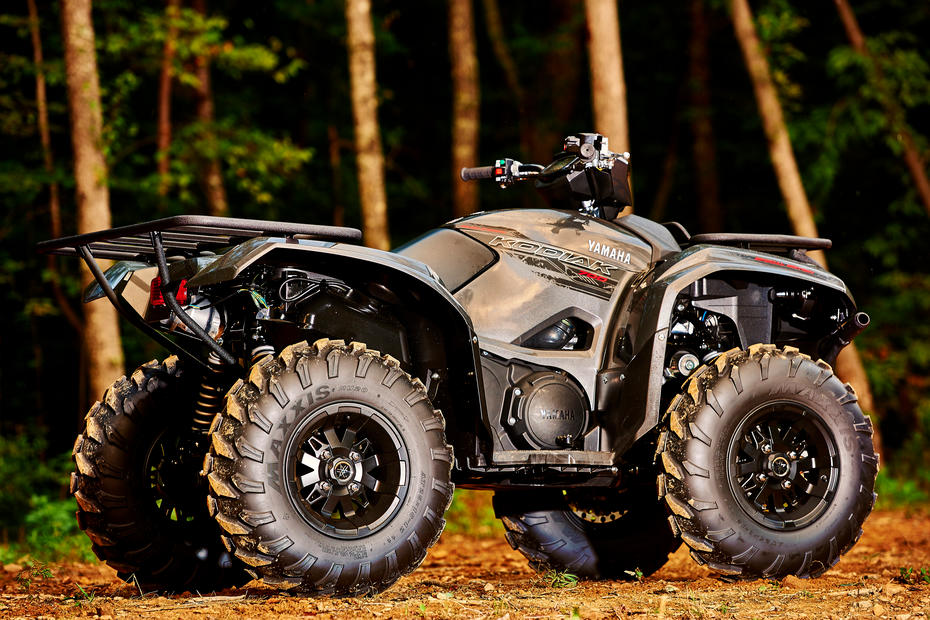
for $8,899, the Kodiak 700 EPS SE offers all of the EPS additional features, plus Yamaha’s On-Command push button electronic four-wheel-drive with front differential lock, cast aluminum wheels, and Carbon Metallic painted bodywork.
The Test
Rocky and technical, Windrock Park, located in Oliver Springs, Tennessee, was the site of our brief half day encounter with the Kodiak 700 EPS, having spent the day before riding the highly updated Grizzly 700.
After a day of riding the Grizzly, Yamaha’s efforts to make the Kodiak feel like a mid-sized 4×4 were immediately apparent. The new fenders are thicker to increase durability. They feature a lower height making throwing a leg over easier. The Kodiak’s sit-in style seat is just over an inch lower than the 2016 Grizzly’s. The 33.9” seat height is 1.7” lower than the Grizzly 550 and just .8” taller than the mid-size Grizzly 450. The Kodiak’s handlebars’ height is just over two inches lower than the new Grizzly and its increased sweep brings it almost an inch closer.
All these changes add up to a cockpit that makes you feel like you are on a mid-sized machine. Comfort level seemed high during our limited ride, and we loved how easy the Kodiak is to manipulate for climbing, descending, and cornering. We think riders of most sizes and experience levels will find this machine welcoming and comfortable.
The new 708cc, four-valve, double-overhead-cam engine, with fuel-injected engine, is identical to the one found in the Grizzly 700, with the exception of a switch from 18.0g to 30.0g clutch weights to smooth the feeling of the Kodiak’s power delivery.
The transmission features high and low forward ranges, plus neutral, reverse, and park selected by a smooth, precise gated shifter. The limited-slip, four-wheel-drive system is engaged by a left hand mounted lever and cable assembly. The mechanical engagement seems a little dated, but gets the job done cost effectively.
At 48 horsepower, according to CARB, the new engine is claimed to produce 6% more power and 9% more torque than the old Grizzly 700. It’s also claimed to produce 30% more power and torque than the old Grizzly 550, while only outweighing it by 29 pounds at a claimed 677 pounds wet.
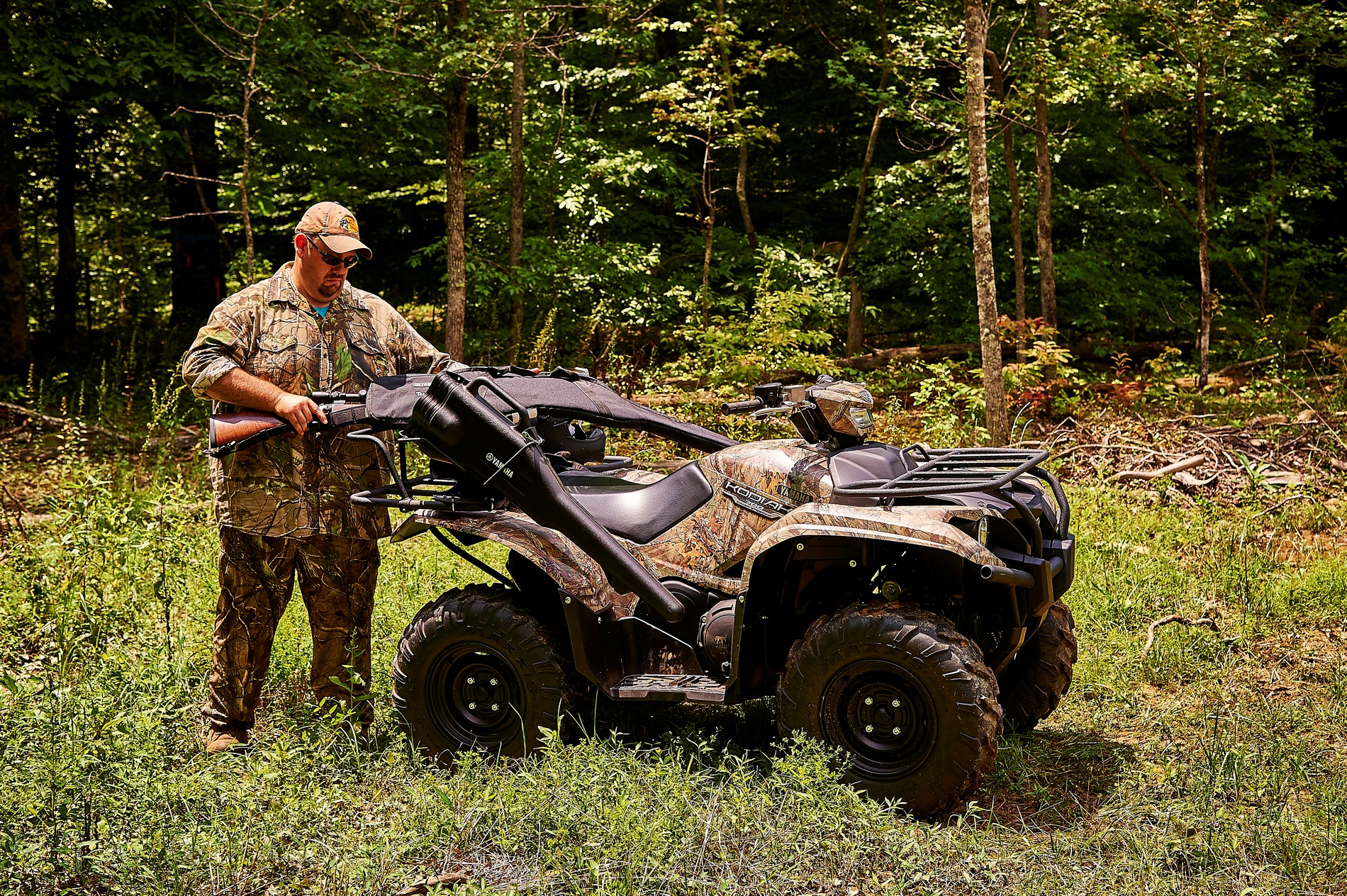
The big single produces a good amount of low-end torque and the added clutch weight keeps the engine riding lower on the torque curve longer. This lets you cruise along lower in the RPMs keeping noise to a minimum, something hunters will love.
12g of clutch weight makes a surprising difference. The big single produces a good amount of low-end torque and the added clutch weight keeps the engine riding lower on the torque curve longer. This makes acceleration feel smoother when you stab the throttle, and it lets you cruise along at a lower RPM, keeping the engine quieter and almost undoubtedly saving fuel.
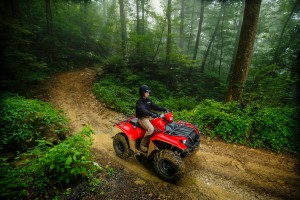
The added clutch weight makes the Kodiak more tractable in slippery conditions. Push the throttle a little farther on the Kodiak and there’s plenty of power in the mid-range for fast spirited runs down the trail.
The new engine produces a good amount of mid-range power; it just takes the engine a little longer to spin up with the heavier clutch weights. While it makes wheelies a little more difficult, it makes the already smooth engine feel more manageable and hooked up on wet, slimy trails.
Push the throttle a little farther on the Kodiak and there’s plenty of power in the mid-range for fast spirited runs down the trail. The new engine provides a good amount of power for the machine’s relatively light weight adding to its potential for fun. Its ultra-smooth power delivery will make the machine a little easier to manage for beginners, while offering plenty of power for plowing or towing.
The airbox is located under the seat, providing tool-free air filter maintenance. Its intake, along with the CVT venting, is routed high to the center of the vehicle. We tested its splash protection capabilities a couple times with trouble-free results.
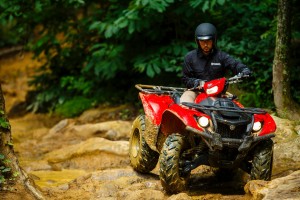
The chassis, suspension, and tires combine with the lower seat and bar height making the Kodiak a very competent handling machine.
As we mentioned earlier, the Kodiak feels more like a midsize machine when you ride it. However, it’s built on a modified version of the original Grizzly 550 and 700 chassis, providing the benefit is big chassis performance and a more manageable feeling ATV. With dual control arms at both ends, the shocks deliver 7.1” of travel up front and 9.1” of travel out back. The KYB shocks feature new spring and valve settings to match the Kodiak’s intended use and 25” Maxxis tires. The Kodiak has 10.8” of ground clearance, maximized by the wide-arc lower front control arms.
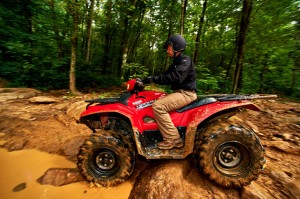
We ran the tires in both dry and rain-drenched muddy conditions proving their performance is well-rounded.
The chassis, suspension, and tires combine with the lower seat and bar height making the Kodiak a very competent handling machine. We ran the tires in both dry and rain-drenched muddy conditions proving their performance is well-rounded. Forward traction and directional control were good, and tire roll wasn’t pronounced in corners. Yamaha’s electric power steering remains one of the best. It provides a natural feeling of how the machine is reacting to the trail, while reducing steering effort.
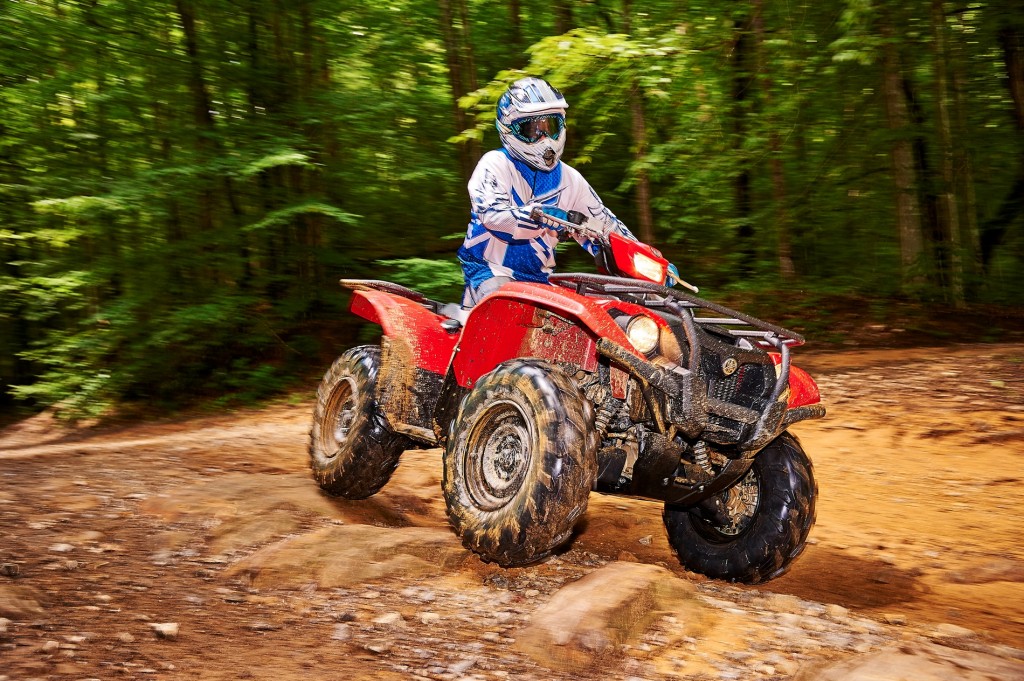
The new tires and suspension give this tried and true chassis a more planted feeling on corners and side hills.
The new tires and suspension give this tried and true chassis a more planted feeling than we remember on corners and side hills. Of course, the more compact ergonomics with a lower seat height, lower your center of gravity, allowing you to more easily counterweight the machine, further enhancing handling and control.
Suspension action seemed well rounded, doing a good job of damping hits of various sizes. It was plush enough on the small rocks and roots, while doing a good job of dealing with impacts with half buried boulders. We didn’t feel the need to change the shocks’ preload settings during our testing; a good thing if you’re interested in the base model Kodiak which has non-adjustable shocks. The overall action is a little firm and sporty feeling, so the shocks should hold up well to additional weight being added to the racks. Ground clearance is good, and its slightly narrower 46.5-inch width makes it easier to negotiate around obstacles that you may frame out on.
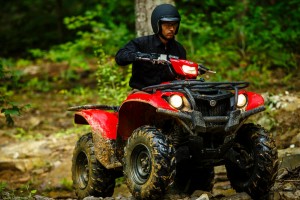
The front hydraulic disc brakes offer great power and feel. The sealed, multi-disc, rear brake is designed to last the life of the vehicle
Braking performance is a mixed bag. They offer separate front and rear operation, which is good. The front hydraulic disc brakes offer great power and feel. The sealed, multi-disc, rear brake is designed to last the life of the vehicle according to Yamaha. It offers decent power, but like all systems of this type, you sacrifice feel and the ability to lock the rear end up on demand for reduced maintenance.
Yamaha uses steel racks on the Kodiak. They’re more durable than composite, especially in cold weather and make strapping down items far easier. They offer 110 pounds of capacity up front and 198 pounds rear in addition to its 1322 pounds of towing capacity. Onboard storage is found between your knees with a DC outlet located on the right front vender.
Conclusion
While the concept of replacing almost an entire line of 4×4 ATVs with a few variations of one model seems difficult to conceive, Yamaha has seemingly done a remarkably effective job of doing it with the 2016 Kodiak 700. Yamaha has made the motor feel even more like a big, easy-going stroker thanks to a little added clutch weight. The compact, comfortable ergonomics make the full-size chassis less intimidating and more manageable. The Kodiak’s entry-level price point is low enough that mid-bore customers have the opportunity to step up to larger displacement capability and the handling benefits of a full-size chassis.
Based on viewer feedback, we can’t help but feel that the market and Yamaha’s lineup might be missing out a bit by not offering an even less expensive, smaller, lighter 4×4, like an updated Grizzly 350; although that would be a little more of a niche ATV, while the 2016 Yamaha Kodiak 700 may very well be the new 4×4 ATV for the masses!
Manufacturer: Yamaha
Model: 2016 Kodiak 700 EPS
MSRP: $8,199
2016 Yamaha Kodiak 700 EPS Ratings
Summary: While the concept of replacing almost an entire line of 4x4 ATVs with a few variations of one model seems difficult to conceive, Yamaha has seemingly done a remarkably effective job of doing it with the 2016 Kodiak 700. Yamaha has made the motor feel even more like a big, easy-going stroker thanks to a little added clutch weight. The compact, comfortable ergonomics make the full-size chassis less intimidating and more manageable. The Kodiak’s entry-level price point is low enough that mid-bore customers have the opportunity to step up to larger displacement capability and the handling benefits of a full-size chassis.

